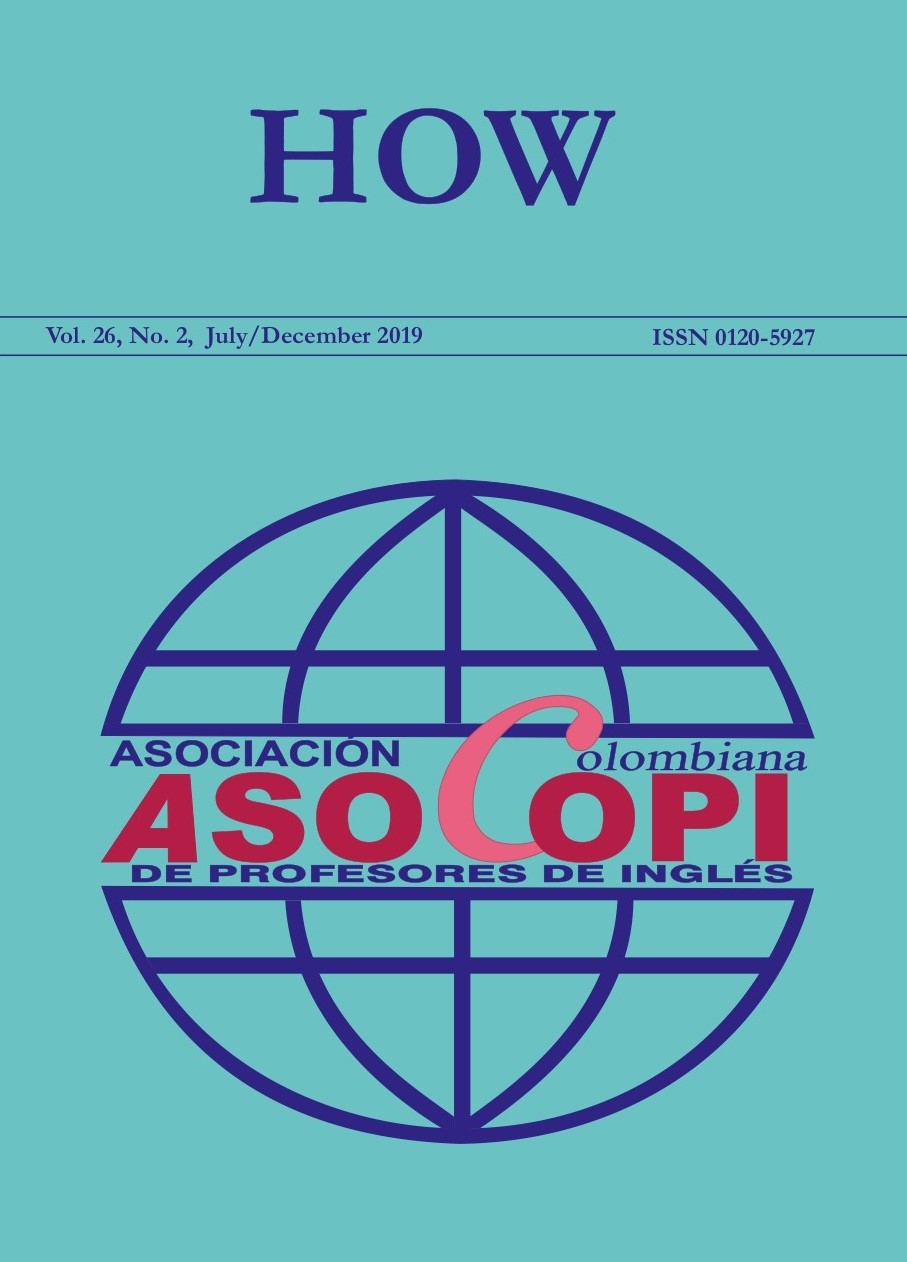A Virtual Learning Object (VLO) to Promote Reading Strategies in an English for Specific Purposes Environment
Main Article Content
Abstract
This study describes the influence of a Virtual Learning Object in the promotion of reading strategies in a class of English for Specific Purposes for the majors of Social Communication and Journalism at a private institution of higher education in Bogota, Colombia. Students’ failure to meet the school standards led to the design and implementation of a virtual tool to support academic achievement. Data came from a sample of 15 students’ reading cycle reports, self-assessment of progress, questionnaires, and interviews. Results suggest that the developed VLO did promote the participants’ appropriation of reading strategies proposed in the design of the course. The process with the VLO not only prompted higher reading comprehension, but also facilitated and enriched learning experiences.
Article Details

This work is licensed under a Creative Commons Attribution-NonCommercial-NoDerivatives 4.0 International License.
The authors of the manuscripts accepted for publication in HOW journal are required to sign a nonexclusive license agreement allowing ASOCOPI to reproduce the full text on the Internet or in any other available source. Authors retain copyright of their manuscripts with the following restrictions: first publication is granted to ASOCOPI; nonexclusive agreements with third parties can be established as long as the original publication in the HOW journal is properly acknowledged.
References
Arias-Soto, L. D., Buitrago-Escobar, Z. R., & Pineda-Baéz, C. (2011). ICT in the professional developments of EFL teachers: Perceptions and challenges. Folios, 33, 25-42.
Assia, B. (2012). CT and reading: In the technology- enhanced extensive reading classroom. Revue Académiques des Sciences Sociales et Humaines, 8(3), 3-16.
Barraza, J. V. (2014). Using interactive graphical and technological strategies for EFL reading comprehension: A case study involving engineering students. Colombian Applied Linguistics Journal, 16(1), 29-39.
Beatty, K. (2012). Teaching and researching computer language learning. Cambridge: Cambridge University Press.
Castillo, R. (2014). Teaching and learning another language strategically. Bogotá: Universidad Distrital Francisco José de Caldas.
Castillo, R. (2017). Changing the course: Interpreting and structuring scientific texts aided by ICT. Latin American Journal of Content and Language Integrated Learning, 10(2), 245-270.
Clavijo Olarte, A., Hine, N. A., & Quintero, L. M. (2008). The virtual forum as an alternative way to enhance foreign language learning. Profile: Issues in Teachers' Professional Development, 9(1), 219-236.
Corbin, J., & Strauss, A. (2008). Basics of qualitative research: Techniques and procedures for developing grounded theory (3rd ed.). Thousand Oaks, CA, US: Sage Publications, Inc.
Craven, M. (2003). Reading keys. Thailand: Macmillan Publishers Limited.
Dhieb-Henia, N. (2008). Designing an e-learning ESP course. Possibilities and challenges. CALL-EJ Online, 9(2), 1-7.
Dudley-Evans, T., & St. John, M. J. (1998). Developments in English for specific purposes: A multi-disciplinary approach. Cambridge: Cambridge University Press.
Hellekjaer, G. O. (2009). Academic English reading proficiency at the university level: A Norwegian case study. Reading in a Foreign Language, 21(2), 198–222.
Hernández-Sampieri, R., Collado, C. F., & Baptista-Lucio, M. (2014). Metodología de la investigación (Vol. 5). México: Mc Graw-Hill.
Hutchinson, T., & Waters, A. (2005). English for specific purposes. Cambridge: Cambridge University Press.
Koda, K. (2005). Insights into second language reading - A cross-linguistic approach. Cambridge: Cambridge University Press.
Lopera-Medina, S. (2014). Motivation conditions in a foreign language reading comprehension course offering both a web-based modality. Profile: Issues in Teachers' Professional Development, 16(1), 89-104.
Merriam, S. B. (2009). Qualitative research: A guide to design and implementation. San Francisco, US: Jossey-Bass Publications.
Muñoz Arteaga, J., Álvarez Rodríguez, F. J., Osorio Urrutia, B., & Cardona Salas, J. P. (2006). Objetos de aprendizaje integrados a un sistema de gestión de aprendizaje. Apertura, 6(3), 109-117.
Nappa, N. R., & Pandiella, S. B. (2012). Estudio y aplicación de objetos de aprendizaje a través del uso de recursos educativos abiertos. Revista Electrónica de Tecnología Educativa, 1(39), 1-17.
Neufeld, P. (2005). Comprehension instruction in content area classes. International Reading Association, 59(4), 302–312.
Osorno Gonzalez, J. A., & Lopera Medina, S. A. (2012). Interaction in an EFL reading comprehension distance web-based course. Ikala, Revista de Lenguaje y Cultura, 17(1), 45-59.
Pang, J. (2008). Research on good and poor reader characteristics: Implications for L2 reading research in China. Reading in a Foreign Language, 20(1), 1-18.
Powers, B. A., & Knapp, T. R. (2006). Dictionary of nursing theory and research (3rd Ed.). NY, USA: Springer Publishing Company.
Sagor, R. (2000). Guiding school improvement with action research. Alexandria, Virginia USA: ASCD.
Snow Chair, C. (2002). Reading for understanding: Toward a research and development program in reading comprehension. Santa Monica, California: Rand.
Suárez-Montes, N., & Díaz-Subieta, L. B. (2015). Estrés académico, deserción y estrategias de retención de estudiantes en la educación superior. Salud Pública, 17(2), 300-313.
Wiley, D. A. (2002). The instructional use of learning objects. Bloomington, Indiana: Agency for Instructional Technology and Association for Educational Communications & Technology.
Yin, R. K. (2014). Case study research- Design and methods (Vol. 5). Newbury Park, CA: Sage.





